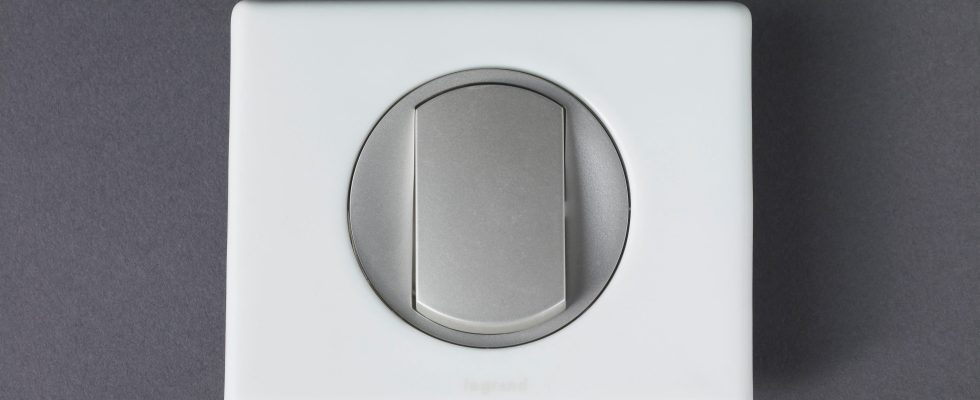In the din of the factory, machines organized in corollas sort thousands of parts which they spit out in droplets. It’s up to neighboring robots to assemble them. The only human presence, an operator observes this strange ballet in silence. At the end of the line, she packages each product for shipment, in a choreography repeated endlessly. At their peak, this trio is capable of producing a switch per second. A frantic pace which allows Legrand to consolidate over the years its leading role in the global electrical equipment market… With complete discretion.
Because, although its panels, sockets and thermostats and other electrical devices are distributed in 180 countries, the group based in Limoges (Haute-Vienne) remains relatively unknown to the general public. Nothing to disrupt the progress of this venerable porcelain manufacturer converted to electrical equipment in the 1950s. A “pivot” engaged well before the start-up era, with a credo: “Positioning itself in niche products considered to be reviews by our customers [NDLR : distributeurs, installateurs, etc.] and offering possibilities for innovation”, summarizes Benoît Coquart, CEO of Legrand.
From charging stations to thermostats
Joining the Legrand group at the age of 22, this Toulouse native followed the example of many of his 38,000 colleagues around the world: he never left. Propelled to the head of the group in 2018, he sees in this niche strategy a “natural barrier to entry” for Chinese competitors, whom he considers reluctant to produce thousands of variations to meet electrical standards varying from one country to another. Is right. With its 300,000 references, Legrand saw its turnover jump beyond 8 billion euros in 2022. Established in 90 countries, including India and China, the group generates the majority of its sales in Central and North America, as well as Europe. Year after year, it achieves high-level operating margins, the level of which fluctuates between 19 and 20%.
Insensitive to Covid, the company is thwarting the crisis that is brewing in real estate like inflation. Except when its unions displayed, at the start of the year, a united front to demand an increase in wages commensurate with that of the cost of living. A rather rare revolt for the group, a quarter of whose global production remains ensured by its 5,000 French employees. Because, although the group suffered a wave of closures at the beginning of the century, France still houses 20 of its 120 factories worldwide… Proof that it is possible to assemble something other than very high-end products in France . “A third of our manufacturing costs are due to raw materials. To be competitive in our business, what is important is to buy well,” explains Benoît Coquart.
An asset that Legrand is banking on to gain a place of choice in the energy transition, thanks to a plethora of offerings. Ignoring the competition, which is fierce in this market, the Limougeaud group has launched an offer in charging stations for electric cars. In the field of data centers – already 14% of its turnover – it acquired the British company USystems, specializing in cooling solutions for these very energy-intensive data cabinets. But Legrand’s flagship product is the programmable thermostat. “For 300 euros, you can achieve energy savings of up to 15% per year. This is far from the investments required to change the energy class of a home, which are insurmountable if they are not massively supported” , insists Benoît Coquart.
Acquisition frenzy
A speech which seems to have made its way to the top of the State. In its new sobriety plan, the executive has decided to subsidize the purchase of these devices. An effort deemed insufficient by Legrand, for which connected thermostats should be taken into account in energy performance diagnostics (DPE). It is still necessary that tenants and owners have the reflex to use them… Hence the State’s reluctance to place them on the same level as insulation and boiler replacement work, certainly expensive, but a priori impervious to human failures.
But, whether the regulations work in its favor or not, Legrand remains convinced that a boulevard is available to it thanks to the electrification of uses and the challenges of sobriety. “In the medium term, energy efficiency, data centers and ‘connected home’ will represent 50% of our activity, compared to 33% at present”, anticipates Benoît Coquart, without giving a precise date. To give substance to its predictions, Legrand buys skills. Lustily. Five years ago, the multinational got its hands on the French start-up Netatmo, in order to build muscle in the software. In Brazil, it absorbed a company specializing in low voltage for photovoltaics. Since 2010, Legrand indicates that it has made more than 60 acquisitions, for a cumulative investment of 5.6 billion euros. “We have already announced two acquisitions this year. If others do not follow, it is because we have done our job badly,” laughs the manager, never shy of a good word.
But such a buying frenzy is not without danger. “If Legrand does not manage to accelerate synergies between the different brands and optimize costs, silos risk developing. This could end up slowing down its growth,” warns Alban Dubois, energy, innovation and climate expert at the Sia firm. Partners. A challenge that the Legrand group, one of the smallest in the CAC 40, will have to take on to move from shadow to light.
